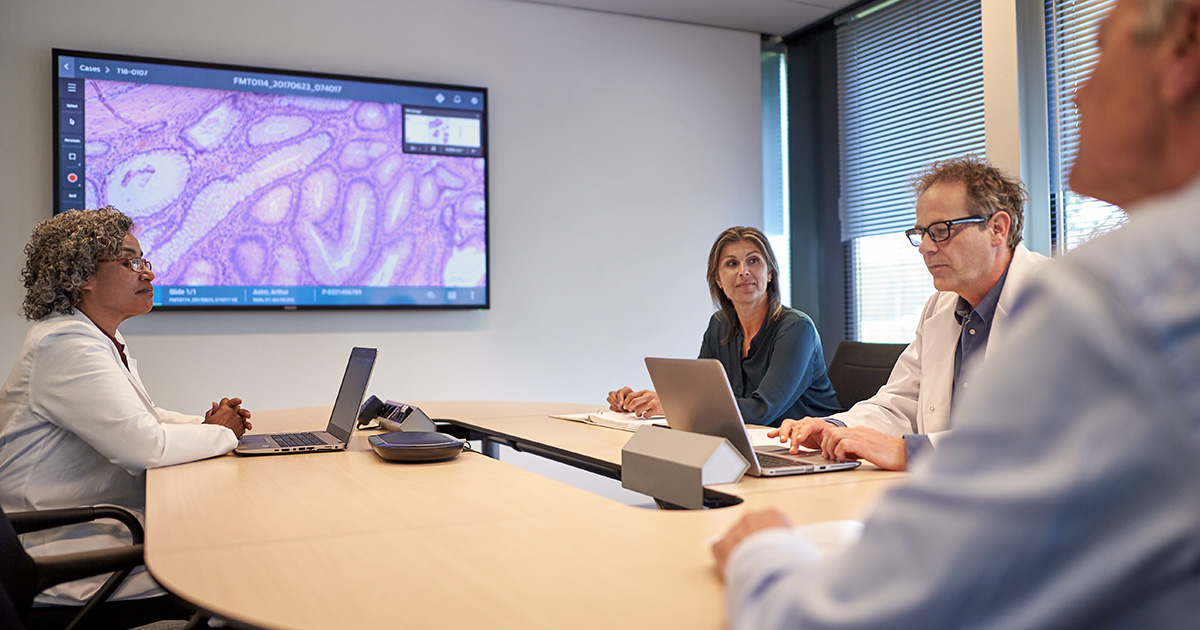
Tech solutions are being implemented across Europe to support the healthcare workforce in adapting to rapidly evolving healthcare systems. Digital health tools, artificial intelligence and innovative care models are redefining roles and workflows – driven by mounting pressures that make transformation essential.
Factors reshaping care needs
According to the European Commission, by 2050, individuals aged 55 years or more are expected to constitute over 40% of the European population, up from 25% in 2019. The prevalence of chronic conditions is also expected to rise in the coming years. All of this means that a more qualified workforce will be required to look after this population, especially in specialties such as geriatrics, internal medicine and nursing. But at the same time, according to the EU Comission, nearly half of EU countries recorded a share over 40.0% for practising doctors aged 55 years or older. The average age of the nursing workforce is rising as well in some countries, most notably in Lithuania, where more than half (51.5%) of all practising nurses in 2022 were aged 55 years or over. Workforce shortages are already happening and will increase in the coming years, especially in rural and underserved areas.
From the awareness that doing the same thing with more people won't save healthcare, new care models are being designed and implemented. The liquid hospital's concept, where care is decentralised outside of the hospital and moved to the home whenever possible, will keep growing. We will need adaptable and trained professionals to attend to patients remotely, through telemedicine, remote monitoring and in their homes. It may also require training patients' care givers.
Workforce differences across Europe
The World Health Organization (WHO) estimates a projected shortfall of 11 million health workers by 2030, mostly in low- and lower-middle-income countries. We can expect significant variation across Europe, influenced by policy, economic development, digital maturity and demographic profiles:
- Northern and Western Europe are leading the way in terms of adoption of digital health and investment in new technologies, as well as task repartitions amongst professionals, giving nurses a better and more attractive status.
- Southern Europe is slower in adopting digital health due mainly to budget constraints.
- Eastern Europe sees its workforce migrating to Western Europe, especially due to status recognition and the gap in digital infrastructure.
The good and the bad of technology in healthcare
Technology-driven solutions such as AI, robotics and virtual reality are gradually being integrated into healthcare systems to enhance diagnostics, clinical decision-making and patient care. Effectively leveraging healthcare data – through accurate collection, interpretation and application – will be essential for advancing diagnostics, enabling personalised treatments and driving research.
But the road is still bumpy. "In the past, we dictated our notes on tape, and experienced medical secretaries who knew us and our field well transcribed them," Sissel Hegdahl Oversand, head of the department of gynecology at Oslo University Hospital, said. "Now we use speech recognition, which transcribes our dictation in real time.
"However, the technology still makes so many errors – both typographical and content-related, sometimes even reversing the intended meaning – that we have to spend a significant amount of time correcting them afterward," Oversand said. "As a result, the process is actually more time-consuming than before."
A generational shift away from lifelong sacrifice in medicine
There's also expectations of the new generation regarding how they want to access and consume healthcare as patients but also the working conditions they want as future healthcare professionals.
"As a medical student, I have always been passionate about surgery. However, the only time I began to question whether I truly wanted to become a surgeon – or even a doctor – was after attending a lecture by a renowned 80-year-old surgeon with a distinguished and fulfilling career," Younis Alemour, Master 2 student in human physiology and pathophysiology at the Sorbonne University in Paris, said. "During the Q&A, I asked him how he managed to balance his demanding specialty with family life. His response was deeply moving: He broke into tears, his voice trembling as he spoke of all the school plays and recitals he had missed while dedicating himself to his work. Watching those tears fall down his cheeks, I couldn't help but reflect on the personal sacrifices that a life in medicine often demands. Moments like that make me pause and truly reconsider what we are willing to give up for this calling."
How can we prepare the healthcare workforce for those challenges?
All innovations and evolutions require training and continuous education so the workforce knows how to use tech-driven tools and understand their benefits to them and their patients.
It also requires the adaptation and creation of new curricula to broaden healthcare professionals' knowledge on topics such as digital literacy, data management, telemedicine, precision medicine and cybersecurity, as well as to build soft skills such as resilience, adaptability and ethical decision-making.
Solutions have already emerged to compensate for the shortage of healthcare professionals, especially in rural and underserved areas. For instance, a few weeks ago, SNCF, the French railway company, launched its first telemedicine service in a railway station near Paris. It plans to launch about 300 remote points of care in railway stations by 2028.
Sissel Hegdahl Oversand and Younis Alemour will speak at HIMSS25 Europe, at the Future of Workforce Track on 12 June. See the full conference programme and join us in Paris.


